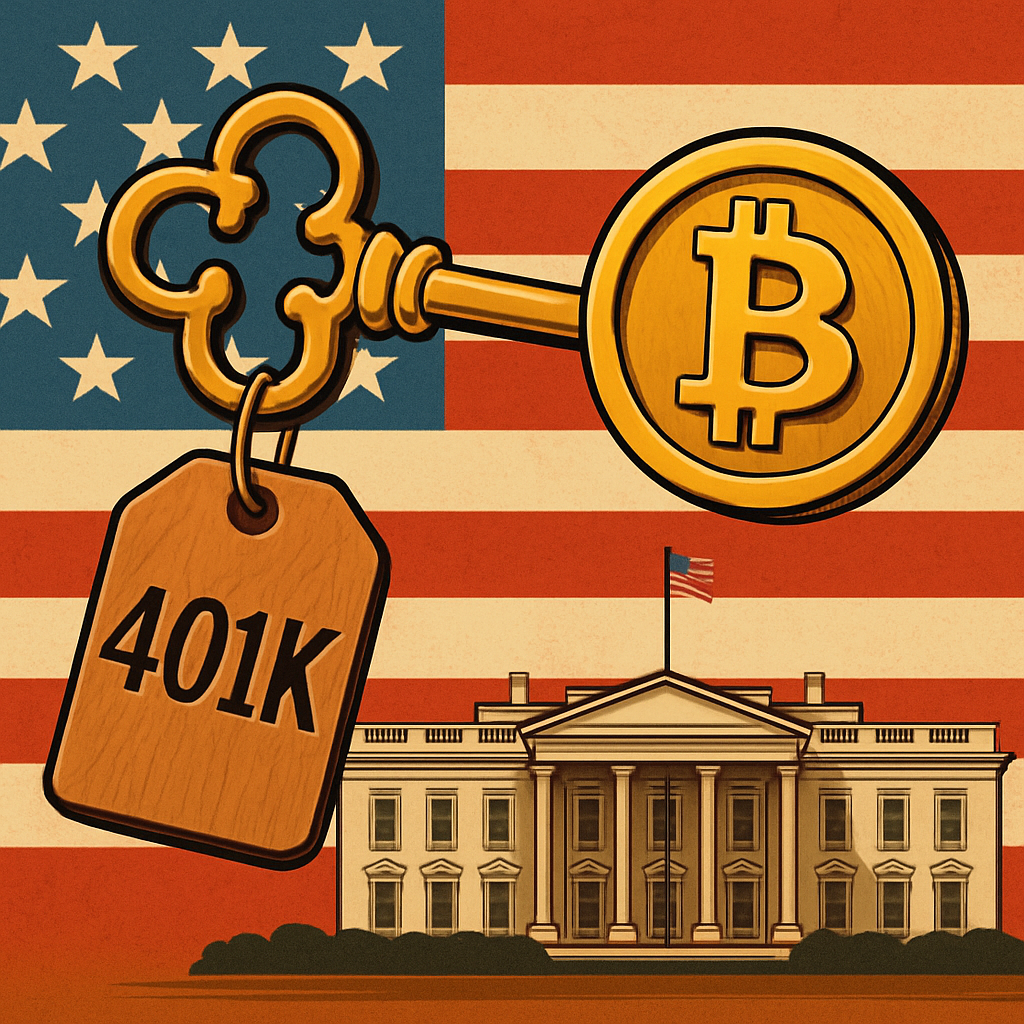As Trump Pushes for Alternative Assets in Retirement Portfolios, Investors Eye a New Era of 401(k) Flexibility
In a move sending shockwaves across traditional finance and crypto markets alike, U.S. President Donald Trump is preparing to sign an executive order that will permit Americans to allocate their 401(k) retirement savings into cryptocurrencies, private equity, and real estate. The decision marks one of the most dramatic policy shifts in retirement planning since the inception of tax-advantaged retirement accounts, potentially unlocking billions in new inflows into digital and alternative assets.
This policy change arrives amid growing investor appetite for diversification beyond public markets, accelerated by persistent inflation, tech sector volatility, and a renewed focus on wealth-building through alternative channels. As of Q2 2025, crypto’s total market capitalization hovers around $3.7 trillion, according to CoinMarketCap, while private equity funds have surpassed $12 trillion in global AUM (Preqin). The integration of these asset classes into tax-advantaged plans could signal a paradigm shift in long-term capital allocation strategies.
Why This Matters for Investors
Until now, U.S. retirement savers had limited access to non-public asset classes through 401(k)s. While self-directed IRAs allowed for crypto and real estate exposure, mainstream employer-sponsored retirement plans remained largely restricted to mutual funds, ETFs, and publicly traded stocks. Trump’s upcoming executive order—expected to be formally signed within days—will lift these limitations, effectively allowing retirement portfolios to mirror the diversified strategies used by institutional investors.
For retail investors, the implications are vast. This policy shift opens the door for long-term crypto accumulation in tax-sheltered accounts—particularly attractive as Bitcoin hovers around the $123,000 mark, with Ethereum climbing 2–3% this week. Additionally, high-net-worth individuals could now channel retirement contributions into real estate developments or private equity vehicles—sectors that have traditionally outperformed in inflationary cycles.
According to a 2024 report by Fidelity Investments, 86% of millennial investors say they would be more likely to contribute to their retirement plans if crypto or real estate options were available. This executive order directly responds to that demand.
Regulatory Landscape: What Comes Next?
While the executive order provides a bold legal framework, actual implementation will depend on regulatory agencies like the Department of Labor (DOL) and the Internal Revenue Service (IRS). Critics argue that retirement accounts tied to volatile assets such as crypto could expose savers to excessive risk. Democratic lawmakers have already indicated that they will challenge the order in Congress, citing concerns over fiduciary protections.
Despite the political pushback, the broader regulatory tone toward digital assets has softened in 2025. The SEC’s approval of multiple spot Bitcoin and Ethereum ETFs earlier this year paved the way for institutional-grade crypto exposure. Analysts at JPMorgan note that with proper safeguards, “the inclusion of digital assets in retirement accounts is both viable and overdue.”
Future Trends to Watch
- Crypto Retirement Funds: Expect a wave of new 401(k)-focused crypto funds from asset managers like Fidelity, Grayscale, and BlackRock. These could include diversified crypto baskets, stablecoin staking, or even yield-bearing DeFi assets.
- Employer Adoption Rates: Watch for major employers—particularly in tech and finance—to be first movers in adopting alternative investment-enabled retirement plans.
- Fintech Expansion: Platforms like Coinbase and Bitwise are likely to expand their offerings into retirement plan integration, targeting HR departments and payroll providers.
- Tax Strategy Overhauls: Financial planners will need to reassess retirement tax strategies, especially regarding capital gains from illiquid or volatile assets.
Key Investment Insight
Trump’s executive order could unlock unprecedented demand for crypto and private asset exposure within retirement accounts. Investors should monitor how asset managers respond with new 401(k) product offerings and consider long-term positioning in infrastructure that facilitates this shift—such as fintech platforms, crypto custodians, and real estate investment tools.
In the short term, expect increased volatility in related markets as investors adjust portfolios and sentiment prices in new demand scenarios. But long-term, this may mark the start of a structural capital reallocation trend that benefits digital assets, alternative finance, and retirement fintech.
Stay ahead of the curve with MoneyNews.Today—your source for timely, data-driven investment insights across markets, technology, and policy.





